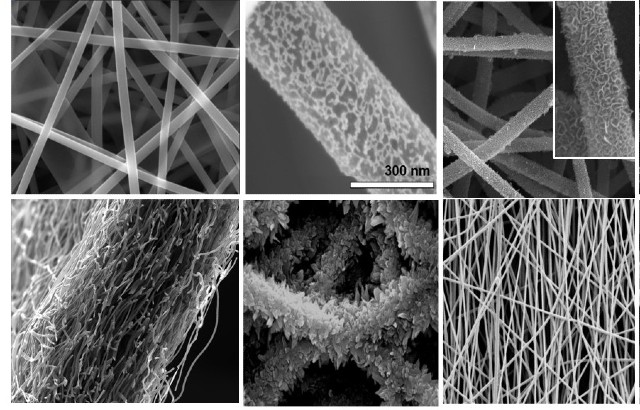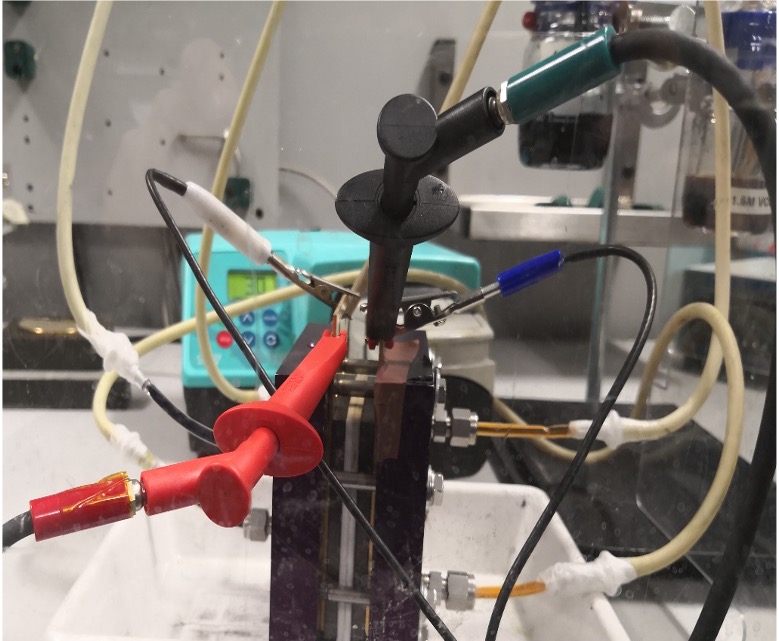To switch to renewables, we need better energy storage
Ana Jorge Sobrido explains why she works on Sustainable Electrodes for Redox Flow Batteries

Electrospun microfibres. Credit: Ana Sobrido/Michael Thielke
The dual energy and climate crises have increased global focus on renewable energy generation through wind and solar: the need for low cost, efficient energy storage is greater now than ever.
Even before the present gas shortage, renewable energy generation was growing rapidly. In 2018, the UK renewables capacity surpassed that of fossil fuels for the first time1 and in 2015, emerging economies invested more in renewables than developed countries.2 This trend has continued since,3 driven mainly by China, India and Brazil4.
The technology with perhaps the greatest potential for safe and effective medium-long term storage is the Redox Flow Battery (RFB), with a predicted market size expected to reach $489 million by 2026.5 High round trip efficiency, depth of discharge, fast responsiveness, reduced environmental impact and decoupling of power and energy capacity are the key features for RFB to become the technology of choice for large scale energy storage.6

With this increase in renewable generation comes a pressing need for effective energy storage. Since sources of renewable energy – like sunlight or wind – are so variable, we need to be able to store the energy they provide for use when there are dips in the supply. The UK national grid’s Future Energy Scenarios all predict a large increase in energy storage capacity, and for longer duration storage on the route to net-zero carbon emissions in 2050.7
A typical RFB consists of two electrolyte tanks, from which the electrolytes with the electroactive species dissolved are circulated by pumping through two carbon electrodes. Our research seeks to improve upon one of their performance-determining components: the electrodes. For that, we use techniques such as electrospinning, to design tailored electrode materials that display the required porous structure and surface chemistry that can enable optimised mass transport and electrochemical properties for application in redox flow batteries.
Electrospinning is a versatile technique that allows the production of freestanding fibrous materials with the additional advantage of allowing the use of biomass and biomass-waste as starting materials.8 We can easily tune the surface of the fibres to enhance charge transfer interaction between redox active species and electrode surface, and hence, increase the performance of the battery. By combining innovative manufacturing processes with in-situ and operando characterisation techniques, we aim to develop the next generation of electrodes for redox flow batteries.
Ana Sobrido is Reader in Sustainable Energy Materials at the School of Engineering and Materials Science, and a UKRI Future Leaders Fellow.
Images: Ana Sobrido; a Redox Flow Battery (credit: Ana Sobrido/Michael Thielke).
References:
1 - Staffell, Electric Insights Quarterly (Drax), 2018
2 - FS-UNEP, Frankfurt School of Finance and Management, 2016
3 - FS-UNEP, Frankfurt School of Finance and Management, 2019
4 - ESO, FES Report, 2019
5 - Market Research Report, SE 5914, 2021
6 - E. Sanchez-Diaz, E. Ventosa, M. Guarnieri, A. Trovo, C. Floz, R. Marcilla, F. Soavi, P. Mazur, E. Aranzabe, R. Ferret, J. Power Sources 2021, 481, 228804
7 - International Energy Agency, World Energy Outlook report, 2021
8 - M. Crespo Ribadeneyra, L. Grogan, H. Au, P. Schlee, S. Herou, T. Neville, P.. L Cullen, M. Kok, O. Hosseinaei, S. Danielsson, P. Tomani, M.Titirici, D. J. L. Brett, P. R. Shearing, R. Jervis, A.B. Jorge Sobrido, Carbon 2020, 157, 847
Related items

27 June 2025

